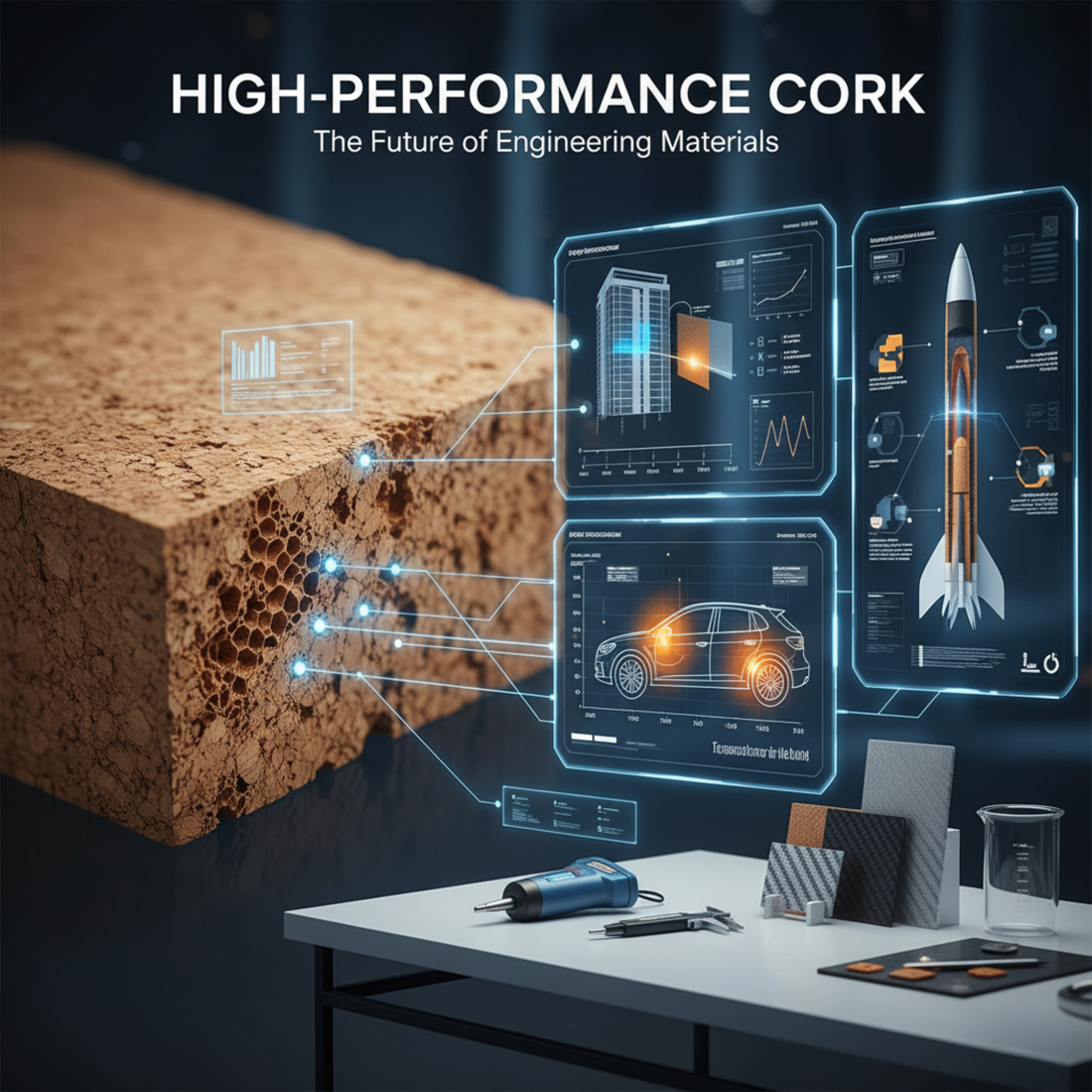
High-Performance Cork: The Future of Engineering Materials
Share
High-Performance Cork: The Future of Engineering Materials
Cork is no longer a niche material for flooring or wine stoppers — it’s emerging as a high-performance solution for advanced engineering applications in industries such as construction, mobility, acoustics and aerospace. In this article, we explore how the unique combination of properties in cork is opening new frontiers of innovation.
🧪 Mechanical & Physical Properties
At the heart of cork’s high performance is its honeycomb cellular structure, which traps air in millions of closed cells, offering lightness, compressibility and elastic recovery. These traits make cork ideal for uses where flexibility and durability matter.
Its thermal conductivity is typically between 0.035 and 0.043 W/m·K, making cork a competitive natural insulator. It also maintains structural integrity under large temperature swings, resisting deformation and retaining its acoustic and mechanical performance.
🔈 Thermal & Acoustic Insulation Capabilities
Because cork cells are filled with air and sealed, heat transfer is slowed significantly, enabling excellent insulation. Its sound-dampening performance is equally impressive: just 3 mm of cork can reduce noise by up to 10 decibels in some applications.
It is also fire-retardant and hypoallergenic, traits extremely valuable in building and material design.
🏗️ Advanced Composites & Hybrid Materials
Engineered cork composites—combining cork with polymers, resins or metals—are unlocking new capabilities. These hybrid materials preserve cork’s elasticity and insulation while boosting strength and formability. As buildings demand lighter, stronger materials, cork-based composites are becoming serious contenders.
🚀 Specialized Applications: Automobiles, Aerospace & Mobility
Cork is already being adopted in automotive interiors for its acoustic damping and antivibration properties. In aerospace, cork’s thermal stability and resistance to extreme temperatures make it a candidate for heat shields and insulating panels. Its proven use in spacecraft thermal protection systems is a powerful endorsement of its reliability in extreme environments.
📈 Case Studies & Performance in Real Projects
- Exterior insulation panels using cork, reducing energy consumption and improving hygrothermal performance
- Vehicle door panels and dashboards applying cork composite inserts for weight savings
- Buildings coated with expanded cork boards to enhance thermal envelope and acoustics
🔍 Why Cork Outperforms Synthetics
Unlike many synthetic insulators, cork maintains its performance over decades without degradation, while remaining breathable (allows vapor diffusion), mold-resistant and stable. Its ecological profile is also unmatched: renewable, recyclable and inherently “green.”
📌 Recommendations for Designers & Engineers
- Specify appropriate density grades of cork for structural vs insulation needs
- Use cork composites in hybrid assemblies for maximum benefit
- Account for thickness to achieve desired R-values (e.g. 0.10 W/m·K per 10 mm thickness)
- Consider long-term stability, moisture behavior and interface compatibility when integrating with other materials
High-performance cork is not just a novelty — it’s a strategic material for the future. From energy-efficient buildings to lightweight vehicles and aerospace systems, cork is proving itself as a smart, sustainable, and high-performing choice. In the coming decades, selecting cork may not just be an eco decision, but a technical imperative.
